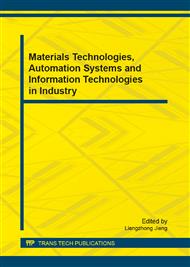p.721
p.726
p.730
p.734
p.740
p.747
p.754
p.758
p.765
Application of Image Processing and Fuzzy Logic to Mobile Robots Providing Assistance to Fire Fighters
Abstract:
The motive behind this research project is to devise a method for overcoming some of the challenges faced by fire fighters in Egypt while accomplishing their duties. This is achieved by utilizing robot vision technology as one of the approaches used for task automation. Based on a study of different methods of automation in human tracking and fire fighting applications, image processing techniques with the highest potential in a fire fighting environment were identified. A system has been developed which fusses the selected image processing algorithms with fuzzified readings from distance sensors, to extract the major blue areas in acquired images that is more likely to correspond to the uniform worn by fire fighters in Egypt. Subsequently the extracted blue area is used to identify a region of interest within the image in order to reduce the computations. The feature detection process constrains its search for a feature found on the back of the target fire fighter to the identified region of interest. Based on the location and area of this feature, the system will calculate the required velocity components to control the motion of the robot and the camera pan and tilt mechanism, in order to continue tracking the target along its path. The system has been validated by conducting an experiment which simulates the key influential factors in a fire fighting environment.
Info:
Periodical:
Pages:
740-746
Citation:
Online since:
August 2013
Authors:
Keywords:
Price:
Сopyright:
© 2013 Trans Tech Publications Ltd. All Rights Reserved
Share:
Citation:


